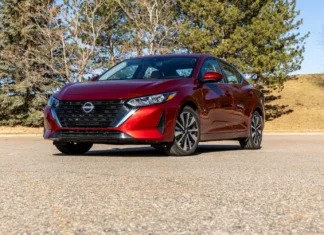[Editor’s note: thanks to Garrett Keidel, a high school student, for providing this perspective.]
Automobiles are one of the most essential inventions ever made. They make it easier to get from point A to point B. At first, cars were simply gas-powered carriages – slow and uncomfortable. Now, we have some of the most highly engineered machines to ever have been conceived with: air-conditioned seats, radar-based cruise control, and GPS navigation. These are just luxuries that we (as a people) have come accustomed too.
The first car to be manufactured in a great mass production was the Ford Model T – produced from 1908 to 1927. This was possible because of the assembly line. Although, Ford was not the first manufacturer of cars (those would be the French makers Panhard & Levassor in 1889 and Peugeot in 1891), he was able to mass produce a car at an affordable price to the American public as well as other regions around the globe.
This process was all held up by his version of the “first conveyor belt-based assembly line”, which allowed for lower production costs. Ford started his business with his “Quadricycle”, but that was a quick failure. His success followed the unveiling of his Model T in 1908 and by 1927 Ford was the number one American car manufacturer, making and selling 15 million Model T’s in 19 years.

Thirty-four years after production of the Model T. General Motors (GM) installed the first industrial robot used in the assembly line process (designed and built by George Devol and Joseph Engelberger). It was called the “Unimate”. The job of this robot was to take die castings from machines and perform welding. This was a hazardous job that not too many people were enthusiastic to do. Unimate was widely used in the construction process of vehicles. It was designed for up to six programmable axes of motion with the commands stored on a magnetic drum. And with one of the simplest controllers available in the industry, it was the easiest to produce with high-quality and reliable outputs.
Many people believe that robotics have displaced many of the human employees to save costs and improve quality. Although this scenario happened, many of those laid off were then hired at the plants that make the robots. According to the International Federation of Robotics (IFR), global sales of robotics increased by 38.0% in 2011. With Japan and South Korea being the largest producers of robots. Germany, China, and the United States made to top 3 consumers of manufacturing robotics.
Domestic car manufacturers are now introducing a third shift for employees at the factories. 2011 saw more double-shift plants and factories than in previous years. With these new shifts being installed, most plants and factories now have people around the clock, making your next car. It turns out, that people are still needed and required to perform many tasks and quality control.
All in all, robotics have made a huge impact on the process of the assembly line to make the cars we all love and want today. The modern day capabilities of our vehicles could not be matched if they were produced by humans only. There will always be a place for the human to be a part of a process that changed the world forever.
Take a look at this TFLcar video from Volkswagen’s Chattanooga assembly factory.
























